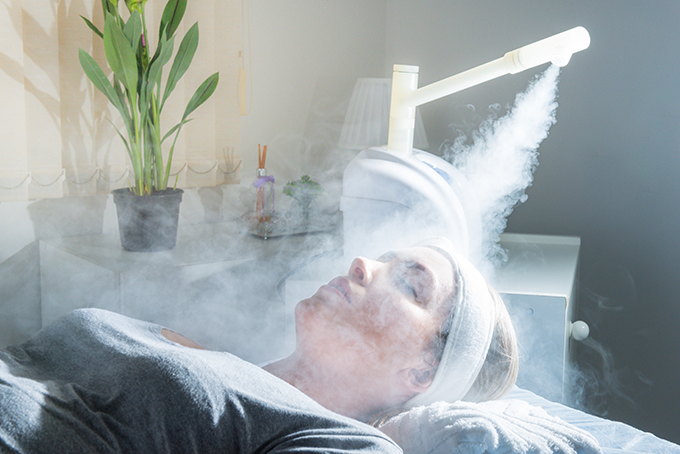Ozone Therapy
Supercharge Your Health: Ozone Therapy's Impact on Circulation & Immunity

What is Ozone Therapy?
How Does Ozone Therapy Work?
Ozone therapy uses O3, a compound that is known for its strong oxidizing properties. Because of this, research shows the body responds by producing more antioxidant enzymes, which can help to reduce inflammation. It is also thought to increase oxygen delivery and help stimulate the immune system, amongst other things.

Improved Blood Circulation
Enhanced Oxygen Delivery To Tissues
Immune System Modulation
Antioxidant Effects
Anti-Inflammatory Properties
Enhanced Wound Healing
Studies have found that there are “significant improvements in wound closure with ozone therapy.”
Potential Antimicrobial Benefits
Ozone has known antimicrobial and antifungal properties.
Pain Relief
Ozone therapy has been shown to help treat conditions such as chronic back pain
Adjunctive Cancer Therapy
Studies suggest that ozone therapy may be used to help treat cancer. According to a recent study, Ozone therapy “…represents a promising alternative treatment option for those with cancer and may be a viable regimen for use against gliomas.”
Detoxification Support
Ozone therapy increases antioxidant levels in the body, which may help with detoxification.
The Benefits of Ozone Therapy
Helping to encourage the body to heal itself
A non-invasive and effective approach to traditional medical care
Research-backed benefits for certain health conditions
How Does Ozone TherapyWork? Is It Effective?
Is Ozone Therapy Safe?
Ozone therapy is not yet FDA-approved, and the side effects are not fully understood.
The FDA has stated that ozone is a toxic gas, with no known medical benefits.
Research supports its use for treating diseases and managing age-related disorders. Studies consistently demonstrate its effectiveness and safety, with minimal and preventable side effects.
It’s important to talk with your doctor to make an informed choice about what’s best for you and your unique situation.
Ozone Therapy Procedures
Ozone Blood Therapy
Also known as autohemotherapy, where blood is taken from your body, mixed with ozone, and injected back in.
Major Autohemotherapy (MAH)
Minor Autohemotherapy
On the other hand, this is a brief procedure where a small amount of blood is drawn from the patient’s vein, combined with ozone in a syringe, and injected into the gluteal muscles. This treatment is typically administered 1-3 times per week, depending on the patient’s condition.

Ozone Sauna Therapy/Oxygen-Ozone Therapy
Where the ozone is inhaled to reach your lungs and other parts of your body.

Ozone Injection Therapy
Where the ozone is injected directly into the body.

Ozone Therapy at Forum Health
Forum Health offers Ozone Therapy in these locations:
Forum Health Asheville Functional Medicine Clinic
Forum Health Brookfield Functional Medicine Clinic
Forum Health Chicago Functional Medicine
Forum Health Coppell Integrative Medicine Clinic
Forum Health Fond du Lac Functional Medicine Doctor
Forum Health Greenville Integrative Doctor
Forum Health Madison Functional Medicine Doctor
Forum Health Mequon Functional Medicine Doctor

Ozone Therapy FAQs
What is the ozone therapy method?
The ozone therapy method is when ozone or O3 is administered in the body to treat and prevent different health conditions. It can be mixed with blood, injected, or inhaled.
How long does ozone therapy work?
The effectiveness of ozone therapy can vary depending on the patient's condition and how well they respond to the therapy. In some cases, the effects of ozone therapy may be immediate, while in others, it may take several sessions. Additionally, the duration of benefits can also depend on the underlying health issue being addressed. Some patients may require periodic maintenance treatments to sustain the benefits over time.
How often should you do ozone therapy?
The frequency of ozone therapy sessions can vary depending on the patient's health condition, the severity of the condition being treated, and the specific protocol recommended.
For certain conditions, patients might undergo ozone therapy sessions multiple times and then transition to a maintenance schedule with sessions occurring less frequently. However, since no two cases are alike, patients should follow the guidance of their Forum Health provider to determine the appropriate frequency and duration of treatment for their specific needs.
References:
- Mechanisms of Action Involved in Ozone Therapy: Is healing induced via a mild oxidative stress? by Masaru Sagai and Velio Bocci (2011). Retrieved from https://www.ncbi.nlm.nih.gov/pmc/articles/PMC3298518/
- Ozone therapy: an overview of pharmacodynamics, current research, and clinical utility by Noel L Smith, Anthony L Wilson, Jason Gandhi, Sohrab Vatsia, and Sardar Ali Khan (2017). Retrieved from https://pubmed.ncbi.nlm.nih.gov/29152215/
- Potential therapeutic effect of oxygen-ozone in controlling of COVID-19 disease by Bahman Yousefi, Seyedeh Zahra Banihashemian, Zahra Khatibiyan Feyzabadi, Sahar Hasanpour, Parviz Kokhaei, Anna Abdolshahi, Alireza Emadi and Majid Eslami (2022). Retrieved from https://pubmed.ncbi.nlm.nih.gov/34677149/
- Ozone therapy: A clinical review by A. M. Elvis and J. S. Ekta (2011). Retrieved from https://www.ncbi.nlm.nih.gov/pmc/articles/PMC3312702/
Mechanisms of Action of Ozone Therapy in Emerging Viral Diseases: Immunomodulatory Effects and Therapeutic Advantages With Reference to SARS-CoV-2 by Alessandra Cenci, Iole Macchia, Valentina La Sorsa, Clemente Sbarigia, Valentina Di Donna, and Donatella Pietraforte (2022). Retrieved from https://www.ncbi.nlm.nih.gov/pmc/articles/PMC9069003/
- Anti-inflammatory Effect of Ozone Therapy in an Experimental Model of Rheumatoid Arthritis by Ana Paula Santos Tartari, Felipe Figueiredo Moreira, Mário César Da Silva Pereira, Emerson Carraro, Francisco José Cidral-Filho, Afonso Inoue Salgado, Ivo Ilvan Kerppers (2020). Retrieved from https://pubmed.ncbi.nlm.nih.gov/32382842/
- Ozone therapy for the treatment of chronic wounds: A systematic review by Erin Fitzpatrick, Olivia J Holland and Jessica J Vanderlelie (2018). Retrieved from https://pubmed.ncbi.nlm.nih.gov/29536625/
- Antimicrobial activity of ozonated water by Dariusz Białoszewski, Ewa Bocian, Bozena Bukowska, Magdalena Czajkowska, Beata Sokół-Leszczyńska, Stefan Tyski (2010). Retrieved from https://pubmed.ncbi.nlm.nih.gov/20802424/
- Ozone therapy as a treatment for low back pain secondary to herniated disc: a systematic review and meta-analysis of randomized controlled trials by Francisco N De Oliveira Magalhaes, Luciana Dotta, Andre Sasse, Manoel J Teixera, and Erich T Fonoff (2012). Retrieved from https://pubmed.ncbi.nlm.nih.gov/22430658/
- Ozone therapy: A clinical review by A M Elvis and J S Ekta (2011). Retrieved from https://pubmed.ncbi.nlm.nih.gov/22470237/
Haffner, S. M., Degoutin, J., Löffler, M. F., & Friedl, P. (2022).
- Ozone therapy in COVID-19: a narrative review. ** International Journal of Molecular Sciences,** 23(18), 10928. Retrieved from https://www.ncbi.nlm.nih.gov/pmc/articles/PMC9670171/


